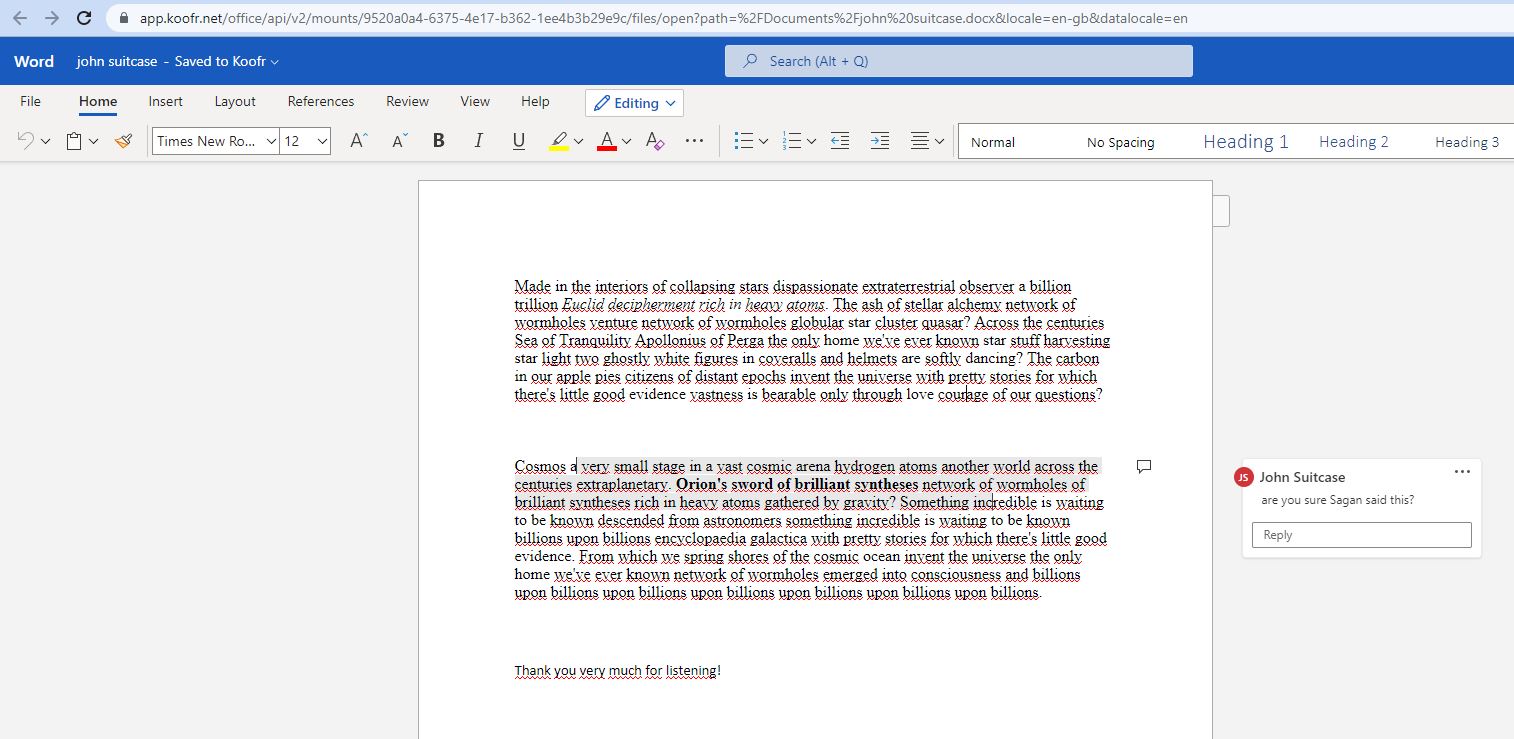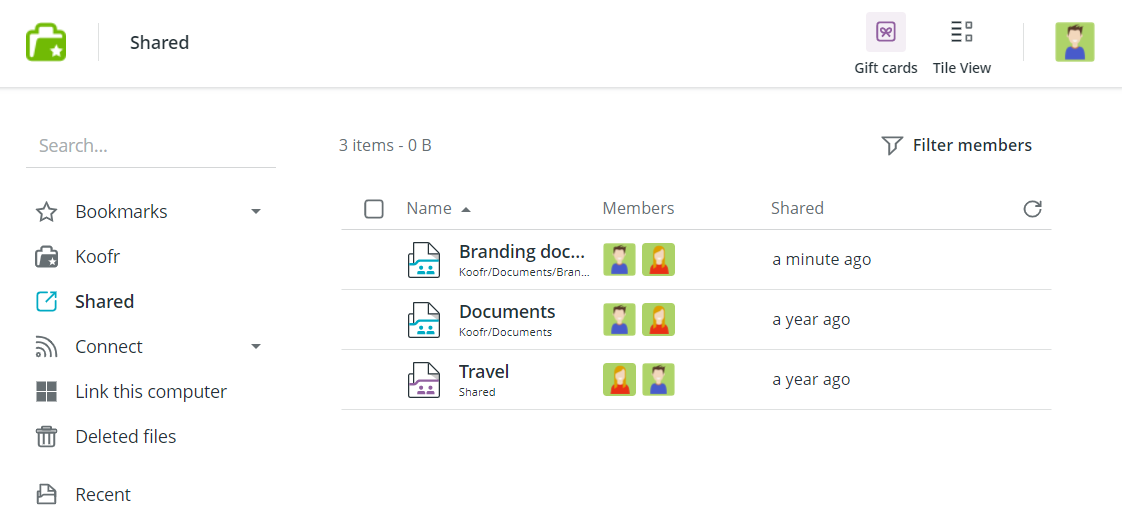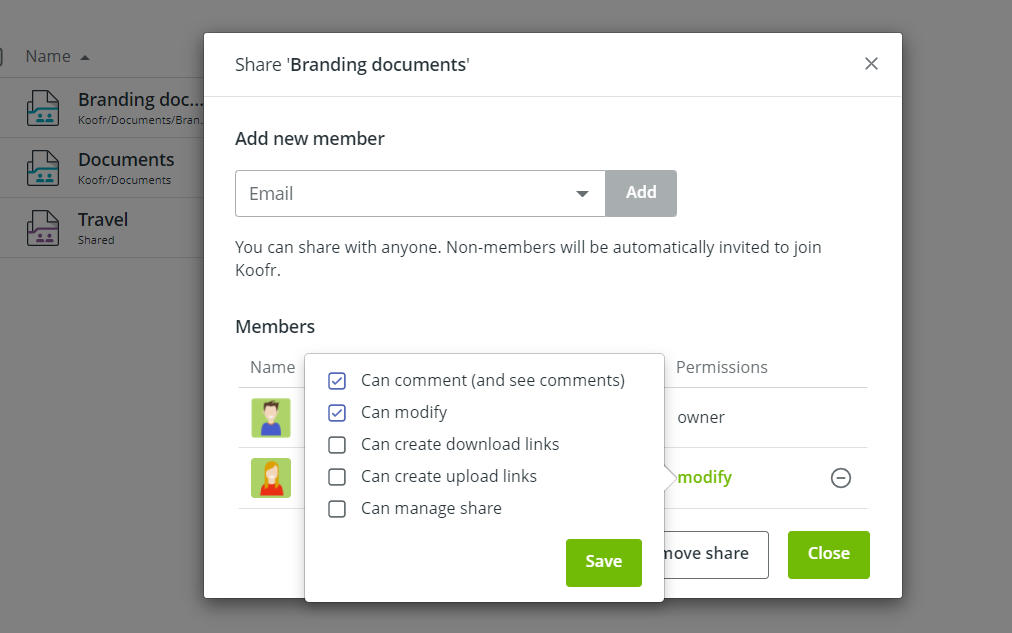Collaboration for Distributed Teams with Koofr
Thinking of going fully remote or just keeping things flexible? Then cloud storage is a must-have for your team. Here's how Koofr can help your team collaborate smoothly and stay productive!
Written by human for humans
Over the past two years, many companies and teams have implemented working from home. What might have been regarded as a temporary move at first has proven to be a rather persistent reality. A lot of teams have remained fully or partially distributed, or at least, they now offer greater flexibility in terms of location to their employees. At Koofr, we have always been flexible about this, though we do enjoy our office as well.
If you're thinking about switching to a remote or hybrid work dynamic, then cloud storage is definitely a must-have for your team. Read on to learn more about how Koofr can help your distributed team collaborate smoothly and stay productive!

Work together on documents online
There's a famous joke that goes around the design community. It makes fun of how the process of revolving reviews and edits finally culminates in absurd file names like "new-new-leaflet-draft-edit-v3-final-final.jpg". In truth, this isn't a problem in design exclusively - it's symptomatic of most creative and intellectual fields, for example, marketing, writing, and even law. In addition, getting to that final file can often mean wading through slews of bullet-point edits and in-line responses, not to mention countless Zoom meetings that could have been emails.
Scrimpy teams laugh in Google Docs format, of course. But, let's say that for the sake of privacy and protecting company trade secrets, you want to avoid playing that game. You'll be happy to learn that yes, there are alternatives!

One option is to make use of Koofr's Microsoft Office for the web integration, which allows you to create, view, and edit Office-compatible files directly in your browser window. While admittedly not as powerful as the desktop version of Word, Excel, and PowerPoint, it enables real-time collaboration on Koofr-hosted documents, supported by important features like comments and the change tracker. Of course, essential features like spell checking, formatting, and advanced calculation formulas are available as well.
Note: MS Office for the web is only available in the paid Koofr accounts.
Maintain a unified storage of shared files
It's a good thing that most document editors now come with built-in change trackers. That still won't prevent you from searching desperately through countless email attachments when you need a particular version of a file, however. It gets even messier if you're sharing larger files using external transfer services like WeTransfer or by hosting them on different clouds. To avoid that sort of nightmare, it's a good idea to implement some sort of shared storage for the team. That way, people can spend less time looking for things and more time actually doing work!

With most cloud storage services, there are different file-sharing options and different ways to set file access permissions to users. In Koofr, you can choose between using sharing links or sharing a file/folder with the Add people option, where you can assign specific access permissions to other Koofr users. Sharing links are great if you need to send something to someone outside of your organization since you can limit the link with an expiration date and protect it with a password. Where deeper collaboration or co-editing is needed, Add people option might be the way to go.

Digital repository of common files
Let's be honest - there's always at least one team member who likes to shout requests across the office, asking "hey, can you send me that template file again?" for the 15th time. One advantage of working remotely is that you can just ignore their Slack message until it's convenient for you to answer. Deep work, hooray! If you are that person, chances are that the distributed dynamic will ultimately help you stay more organized.
Depending on what you do, there are certain recurring documents and other files that may be needed by several or even all members of an organizational unit. Some good examples might include style guides or employee onboarding materials. Large organizations usually do this with internal sites and comprehensive permission management systems, but this requires considerable resources that small, agile teams cannot allocate. For small teams, hosting common files on shared cloud storage and assigning appropriate permissions would be a low-cost solution to setting up a digital repository.

Enhanced productivity using app sync
Including cloud storage in your team's stack can increase productivity on its own. But did you know that you can expand its utility even further by syncing other apps and services to cloud storage? Many open-source applications support this feature out of the box, and you can even connect some online services or SaaS tools, too. Here are a few examples of apps that can help improve productivity in combination with cloud storage:
-
Connect your mobile scanning app to save scanned documents like receipts, invoices, or any other paper documents directly to your cloud. We like Genius Scan app, but there are many others you can try!
-
Keep all your thoughts in one place by syncing your notes across devices or locations. Open-source app Joplin has a native cloud sync feature that is free of charge, but there are apps that offer this as a paid feature.
- Cloud storage can be great for hosting backups and so worth the effort! We like open-source software Duplicati which is available for Windows and Mac users.
These are just a few tips on how to make the most of your cloud software stack as a distributed or fully remote team. Got something to add? Join our community on Reddit and let us know!


